The new Seagate “Guardian” series of 10TB hard drives has been launched with three new models, IronWolf (NAS), SkyHawk (surveillance) and BarraCuda Pro (desktop). The drives come complete with an artistic logo of each animal. 10TB hard drives are a natural evolution of hard drive technology designed to deliver low cost bulk storage.
Guardian Series Hard Drive Endurance
If one will recall the days where SSD endurance was questioned, hard drives are now well behind most SSDs in terms of endurance. We started looking at hard dive endurance some time back. Here is how the three new Seagate Guardian 10TB drives compare:
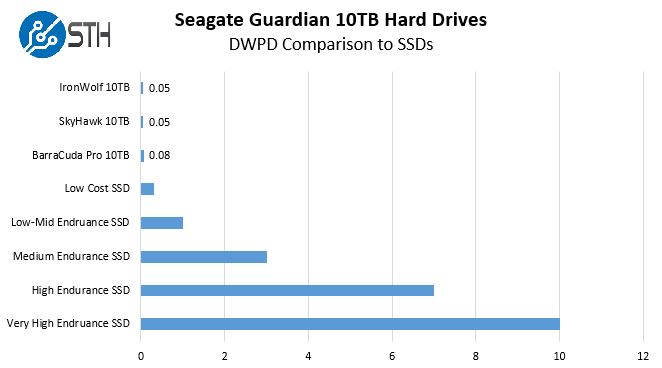
The IronWolf NAS and SkyHawk surveillance hard drives have a 180TB/ year workload rating or a 0.05 DWPD rating if comparing to SSD endurance. For comparison, the Seagate Enterprise Capacity 10TB drives featured a 550TB/ year workload rating. The Seagate BarraCuda Pro 10TB drive is rated at 300TB/ year or 30 drive writes per year.
These figures are not bad. Seagate has an enormous amount of usage data on hard drives. It does give us a data point in understanding real workloads read/ write mix versus what fear uncertainty and doubt mongers would lead users to believe. For example, NAS file servers/ SharePoint servers are generally read heavy workloads which work well with hard drives.
IronWolf 10TB NAS Hard Drive
With a new naming convention, the IronWolf 10TB NAS hard drive is essentially competition for the WD Red. The IronWolf Pro is targeted for a Fall 2016 launch and we expect that will be a competitor to the WD Red Pro. The drive is designed for NAS applications and is said to contain vibration sensors to limit issues that can occur when many hard drives are spinning and vibrating in a chassis. The story here is really that these are Seagate’s new 10TB NAS hard drives.
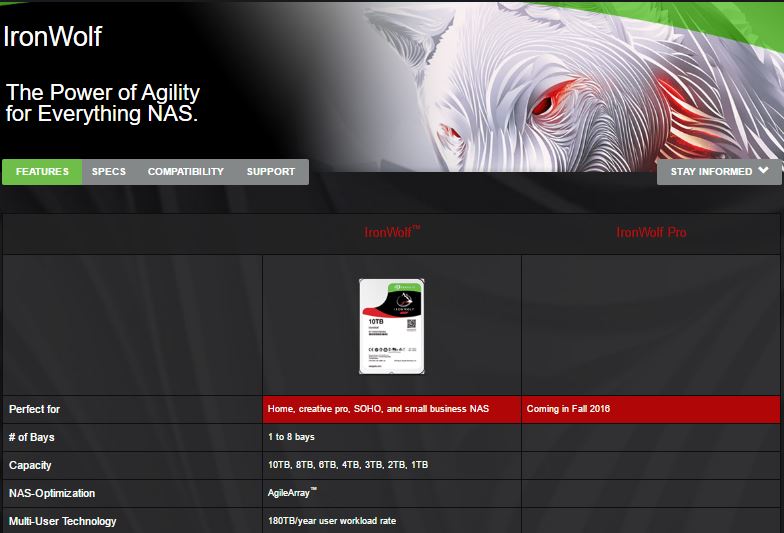
The Seagate IronWolf 10TB drive features a 256MB cache and a 1M hour MTBF and a 1 in 10e15 non-recoverable read error rate. They also have a 3 year warranty.
SkyHawk 10TB Surveillance Hard Drive
Surveillance systems generate a large amount of data that cannot be easily compressed by storage systems since video compression codecs are so good. Seagate is calling this their 10th year of surveillance focused hard drives to deal with the need to write often and read sometimes data. Seagate uses a 90% write/ 10% read workload training.
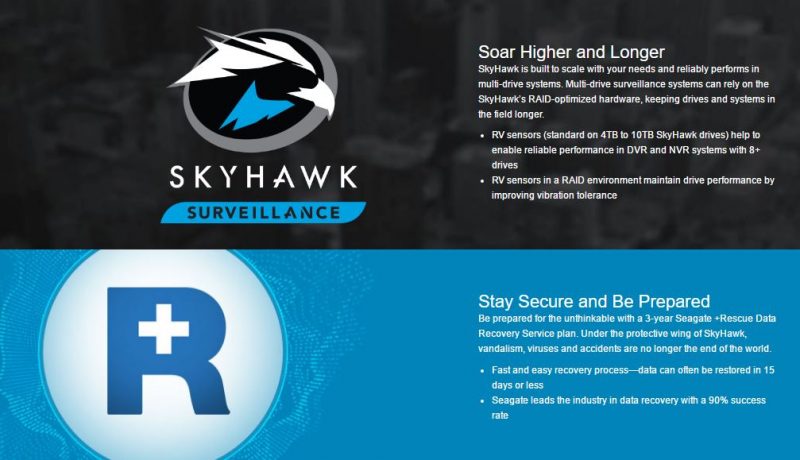
The SkyHawk 10TB hard drive has a 1M hour MTBF rating and a three year warranty. Seagate states that these drives support the ATA streaming command and have 256MB cache as well. Like the IronWolf, it supports 1M hour a 1 in 10e15 non-recoverable read error rate.
BarraCuda Pro 10TB Desktop Hard Drive
Seagate offers this as a drive for programs, however we would like to offer a different view. If one is spending the $535 MSRP on a hard drive, they are also likely in the class of customers who are buying multiple hard drives and solid state drives. OS installs and desktop programs in 2016 belong on solid state drives. We do think Seagate’s marketing of the drives for local media makes sense for those who need high hard drive level performance of a large data set, but do not want to have multiple drives for a RAID array. Perhaps local temporary drive space.
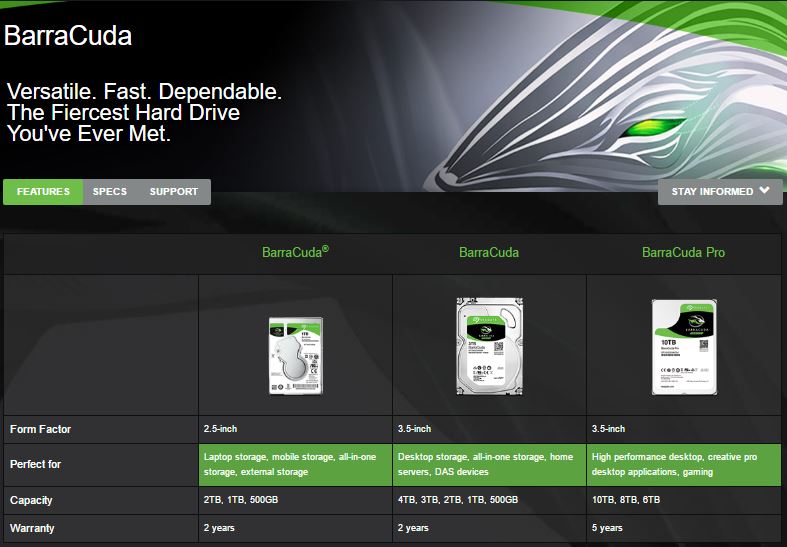
The Seagate BarraCuda Pro 10TB drive features a 256MB cache and a 1 in 10e15 non-recoverable read error rate. We did not see a MTBF rating listed.
Final Words
At 10TB even the BarraCuda Pro hitting its maximum 220MB/s it would take over a half-day to transfer all of the drives data of the device. Note, drives cannot sustain maximum transfer rates across the entire disk media. As a result, we suggest using hard drives for low cost bulk storage in either traditional storage arrays (e.g. RAID) or as cluster storage devices. Disk storage costs are still a fraction of SSD storage pricing but the gap is closing.

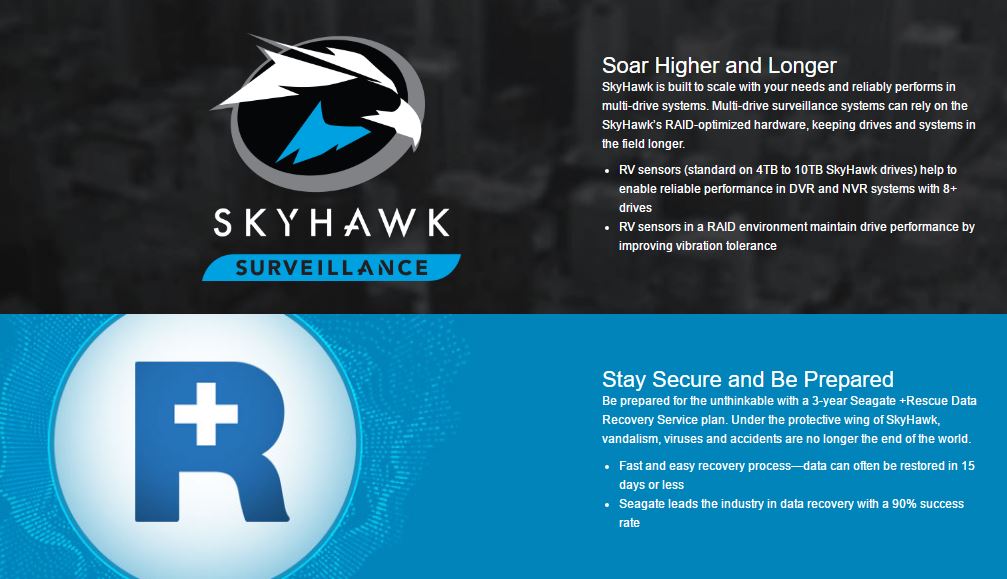



Now the question starts to be how the heck do you rebuild a raid. ZFS and the like are becoming mandatory with these kind of disk capacities.